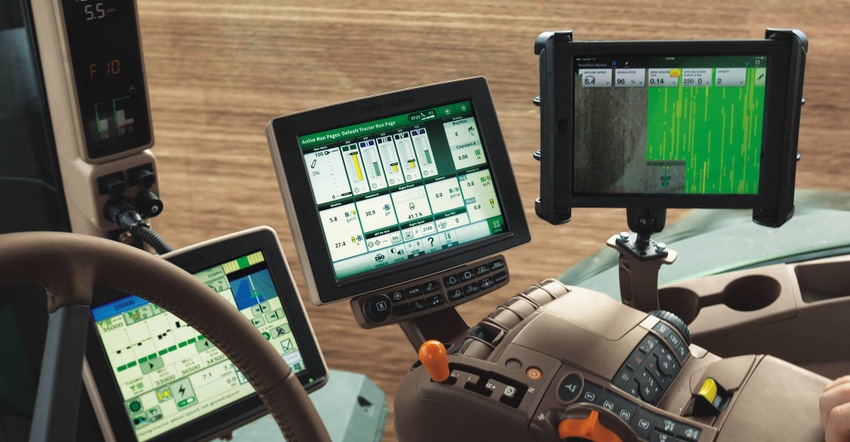October 25, 2016

In this business you often find yourself talking about technology as if everyone uses it. That's especially true of precision agriculture tools. From my perspective, those tools are just on 'every' farm. Not so, according to a new report from USDA. But given the numbers, more farmers may want to consider it.
The report, released in October, by USDA, showed that yield monitors are used on about half of all corn acres, while guidance and auto-steer systems are used on about one-third of those farms.
 They busy cab of the future can also be the profitable cab when technology is deployed in profitable ways.
They busy cab of the future can also be the profitable cab when technology is deployed in profitable ways.
The 46-page report, notes that GPS-based yield mapping is used on about one quarter of those farms, which was kind of a surprise. It appears that for many out there, the in-cab yield monitor is a great tool, but mapping from it may still be gaining in popularity.
I spent time on a farm recently, where the producers were just taking on the new precision ag tools, but they felt they were doing a good job in the past. Adding auto-steering and section control to a planter were deal-makers for the tech for them.
And USDA is validating something that may help convince others that there's value in the tools. GPS mapping showed an increase in operating profit of about 3% on corn farms in the report. The impact of mapping on net returns is about 2%.
Guidance systems raise operating profit on corn farms by about 2.5% and net returns by 1.5%.
And variable-rate technology is raising profit and net returns on corn farms by 1.1%.
This isn't chump change in the grand scheme of farming, and the report showed that the tools offered payback for any operation. Larger operations have added more of the tech than smaller ones, but the report found that smaller farms that use precision ag technologies had lower labor costs than their similar sized counterparts without the tools. In fact for farms of 140 to 400 acres in size, labor costs were up to 70% lower.
Yet larger farms had higher labor costs due to precision ag tech. The report writers explained that those higher costs could be associated with the deeper data management available for a larger operation.
Some surprises
What surprised me from the report were the numbers. We assume 'everyone' is using a new technology, when the report showed that only 25% of farms had adopted yield mapping (representing about 44% of corn acres). And only 19% were using GPS-based soil mapping tools.
This lower-than-expected use curve shows that farmers are still not sure the tools offer a payback, but USDA numbers show higher profits with the added information and control that precision agriculture provides.
Another surprise was the use of a guidance system. Only 29% of corn farms in the report (and these are 2010 figures - the latest available) used auto-guidance. I'm thinking that in the five great years from 2010 to 2015 many producers added that efficiency tool to their operation, yet it also shows that not everyone sees the value of auto-guidance.
In soybeans - from 2012 - 34% were using auto-guidance, representing about 53% of soybean acres.
One other surprise, and this may be the lack of knowledge about potential given the different situations in farming, is the adoption of variable-rate technology. Even among the largest farms where use of GPS yield mapping and auto-guidance topped 80%, the reported showed VRT used by only 40% of producers.
It appears that there are many farmers still looking at these tools with an eye toward understanding payback potential for the business, and ways they'll be able to use these new-fangled tools to profit.
The profitability info from the USDA report does, however, show increased profit potential is possible. You can check out the report at bit.ly/precison-ag-report
About the Author(s)
You May Also Like






